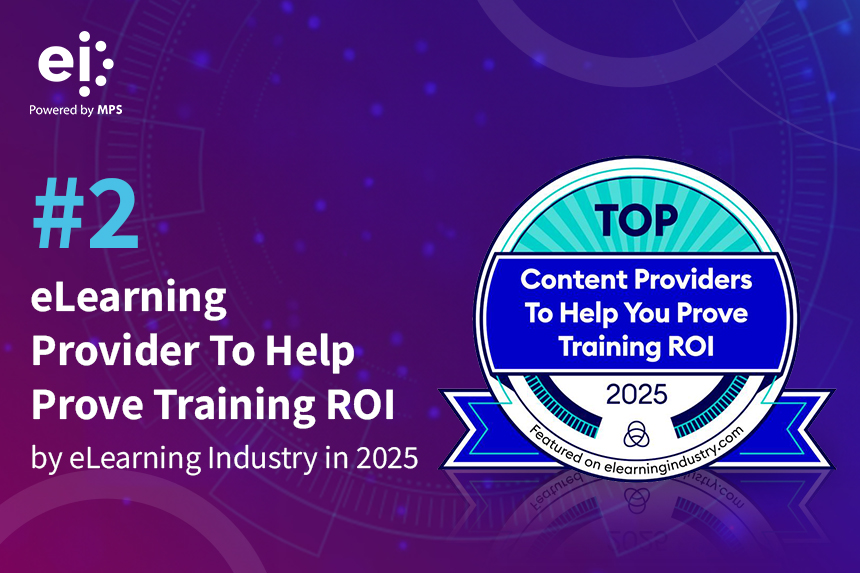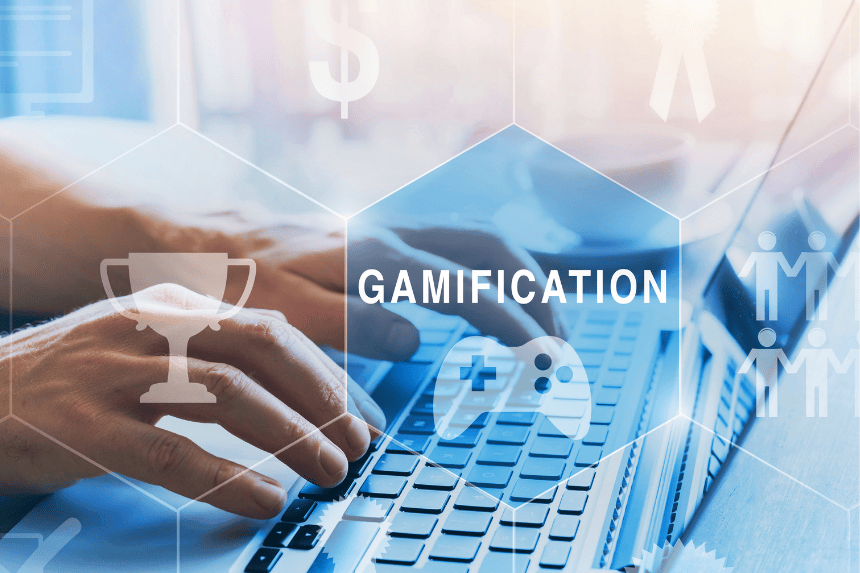
In 2025, learning and development teams can’t afford to guess whether training works.
A Deloitte study found that 95% of L&D teams struggle to connect training programs to business goals. Completion rates and satisfaction surveys only scratch the surface. What decision-makers want is evidence that learning leads to real-world behavior change and measurable performance improvement.
That’s where the Kirkpatrick Model of Training Evaluation comes in. Still one of the most widely used frameworks globally, it helps L&D teams measure training effectiveness across four levels: Reaction, Learning, Behavior, and Results.
In this guide, we’ll explain how the model works, demonstrate its application in digital and hybrid workplaces, and highlight common pitfalls to avoid. Whether you’re evaluating a leadership program or compliance training, you’ll walk away with practical strategies to measure what matters and prove your training’s impact.
TL;DR: Kirkpatrick Model Reframed for 2025
- L&D teams are under pressure to prove impact. Completion rates and feedback scores are no longer enough. Business leaders want evidence of behavior change and performance improvement.
- The Kirkpatrick Model provides a clear framework for evaluation. It evaluates training effectiveness across four levels: Reaction, Learning, Behavior, and Results. A fifth level, ROI, is often added for high-stakes programs.
- Digital tools make each level measurable. From real-time feedback in Slack to tracking behavioral change via CRM or call analysis tools, modern platforms bring each level to life.
- Many teams fall short by stopping at Level 2. Without measuring behavior or linking outcomes to business KPIs, even the most effective programs struggle to demonstrate value.
- Strategic alignment is key. When training goals are tied to business outcomes and supported by the right systems, the Kirkpatrick Model becomes a tool for transformation, not just tracking.
What Is the Kirkpatrick Model of Training Evaluation?
The Kirkpatrick Model is one of the most widely used frameworks for evaluating the effectiveness of corporate training. Originally developed by Donald Kirkpatrick in 1959, the model remains relevant because it answers a question every L&D team faces:
Did the training make a difference? And how can we prove it?
Instead of stopping at attendance or completion metrics, the Kirkpatrick Model evaluates training across four levels:
1. Reaction
Query: Did participants find the training engaging, relevant, and valuable?
Addressable: This is often measured through surveys and feedback forms.
2. Learning
Query: Did they learn something new? Knowledge, skills, or attitudes?
Addressable: This involves assessments, quizzes, or demonstrations of skill.
3. Behavior
Query: Are participants applying what they learned on the job?
Addressable: This is evaluated over time through manager observations, performance data, or 360-degree feedback.
4. Results
Query: Did the training contribute to business outcomes?
Addressable: This connects learning to metrics such as productivity, quality, sales, or customer satisfaction.
What About ROI?
Some organizations also include a fifth level: Return on Investment (ROI), introduced by Jack Phillips. This step compares the financial return of a training program to its cost and is especially useful for high-stakes programs such as leadership development, compliance, or onboarding at scale.
At a Glance: Kirkpatrick Model Summary
| Level | Focus | Key Question | Example Metric |
|---|---|---|---|
| Level 1: Reaction | Learner experience | Did they like it? | Survey scores, comments |
| Level 2: Learning | Knowledge gained | Did they learn it? | Pre/post assessments |
| Level 3: Behavior | Application | Are they using it? | On-the-job performance, CRM data |
| Level 4: Results | Business impact | Did it make a difference? | Productivity, retention, CSAT |
| Level 5: ROI (optional) | Financial impact | Was it worth it? | ROI %, cost-benefit ratio |
Understanding the framework is just step one. The real impact comes from how thoughtfully you apply each level, especially in today’s digital-first, hybrid work environments.
Applying the Kirkpatrick Model in Today’s Learning Landscape
A great model on paper is only as valuable as its execution.
In hybrid workplaces and digital-first environments, measuring learning impact means moving beyond completion rates or smile sheets. L&D teams need smarter ways to track what matters, and the Kirkpatrick Model offers a powerful blueprint when thoughtfully applied.
Here’s how each level can be practically implemented using modern tools, platforms, and data strategies:
Level 1: From Surveys to Sentiment
What it measures: Learner engagement and perceived relevance
Modern approach:
- Replace static surveys with quick polls, emoji reactions, or pulse check-ins delivered via Slack, MS Teams, or in-app LMS widgets
- Use sentiment analysis tools to gauge emotional tone from open responses
Real-world example:
After virtual onboarding, new hires receive a one-click Slack poll asking, “Was this session useful?” with optional feedback. Participation takes seconds, insight is immediate.
Level 2: From Scores to Smart Learning
What it measures: Knowledge, skills, and attitude shifts
Modern approach:
- Use simulations, scenario-based quizzes, or interactive checkpoints in your LMS or LXP
- Embed micro-assessments in learning journeys to reinforce and validate learning over time
Real-world example:
Post-cybersecurity training, employees complete a phishing simulation with real-time coaching that adjusts based on their responses, showing both strengths and gaps.
Level 3: From Observation to Evidence
What it measures: Application of learning on the job
Modern approach:
- Monitor performance signals from CRMs, helpdesk tools, or productivity software
- Collect manager and peer feedback through structured check-ins or 360° assessments
- Use automated observation tools like call analysis or task completion data
Real-world example:
Sales reps are evaluated on how well they apply new consultative techniques by analyzing real sales calls through tools like Gong or Zoom transcriptions.
Level 4: From Metrics to Meaningful Impact
What it measures: Business outcomes tied to learning
Modern approach:
- Map training data to business KPIs, productivity, CSAT, NPS, time-to-productivity, etc.
- Use integrated dashboards and pre/post comparisons to show shifts
- Align measurement frameworks with leadership priorities
Real-world example:
Following a leadership development program, HR monitors team performance, retention rates, and employee satisfaction scores, benchmarking against pre-training baselines.
Level 5: From Insight to Investment Value
What it measures: Financial return on training investment
Modern approach:
- Compare the cost of training to gains in efficiency, output, or cost savings
- Use ROI calculators and financial modeling to tie learning to business returns
- Apply selectively to high-stakes programs such as compliance, onboarding, or leadership development
Real-world example:
A global onboarding program reduces time-to-productivity by two weeks. The company estimates a cost saving of $1.2M annually based on employee ramp-up efficiency, clearly justifying the program’s investment.
Digital tools can bring each level to life in measurable ways. When applied well, the model doesn’t just track training. It sharpens its purpose and strengthens its business relevance.
But even with the best tools and intent, applying the Kirkpatrick Model isn’t always straightforward. Many organizations struggle to turn insights into action or miss key steps in the evaluation process.
To ensure your efforts drive meaningful results, it’s just as important to know what to avoid as it is to know what to measure.
Common Pitfalls When Applying the Kirkpatrick Model
While the Kirkpatrick Model is a proven framework, applying it in real-world contexts can come with challenges. Here are the most common mistakes that limit its effectiveness — and what to watch out for:
1. Attribution Gaps
The issue: It’s tough to isolate training as the reason for improved results, especially in complex work environments with multiple variables.
The fix: Use control groups, baseline comparisons, and multivariate analysis where possible to strengthen data credibility.
2. Delayed Business Outcomes
The issue: Results at Level 4 often take months to appear. Without patience or a long-term view, teams may abandon the evaluation midway.
The fix: Set realistic timelines and track leading indicators (like behavior change) as early signs of impact.
3. Neglecting Level 3 (Behavior)
The issue: Many L&D teams stop after Levels 1 and 2 engagement and knowledge because measuring behavior requires time, tools, and manager alignment.
The fix: Build in follow-up assessments, integrate with workflow tools, and involve line managers from the start.
4. One-Time Measurement
The issue: Training impact is often evaluated once, immediately after delivery. But real change happens over time.
The fix: Design ongoing evaluation loops with spaced assessments, nudges, and periodic feedback.
5. No Business Metric Alignment
The issue: When training goals don’t align with business KPIs, even well-executed programs fail to show value.
The fix: Collaborate with business stakeholders early to define success metrics that matter from CSAT and productivity to revenue impact.
Overcoming these challenges calls for more than quick fixes; it requires an intentional, data-driven strategy. That’s where EI steps in.
How EI Helps You Turn Training Insights into Business Outcomes
The Kirkpatrick Model offers L&D teams a powerful lens to move beyond surface-level metrics and evaluate learning that drives real performance. But to apply it meaningfully, you need more than intent; you need systems that connect learning data to business value.
At EI, we help you make that connection.
Our end-to-end learning ecosystem is built to support every phase of the training lifecycle from delivery to continuous evaluation, ensuring you capture what matters and act on it.
We offer:
- Robust Learning Management Systems that align learning journeys with business priorities
- Assessment Platforms like Cyber Tests and QuizBiz to track retention, application, and behavioral change
- Data-Driven Dashboards that visualize performance across Kirkpatrick’s levels, without added complexity
- Flexible Authoring Tools like LearNow and Mag+ to build, customize, and scale content at speed
- Extended Reality (XR) Solutions to enable immersive training in virtual and hybrid work environments
With our integrated tools and deep L&D expertise, you’re not just deploying technology, you’re building a results-driven strategy. One that’s built on evidence, designed for agility, and proven to deliver measurable impact.
Ready to go beyond activity tracking and prove what truly drives performance? Schedule a call with our team. The next phase of learning starts here.
Frequently Asked Questions
1. What are the four levels of the Kirkpatrick Model of Training Evaluation?
The Kirkpatrick Model evaluates training effectiveness across four levels:
- Level 1: Reaction – Measures learner satisfaction and engagement
- Level 2: Learning – Assesses knowledge or skill acquisition
- Level 3: Behavior – Tracks the on-the-job application of learning
- Level 4: Results – Connects training to business outcomes like productivity, retention, or CSAT
2. How is the Kirkpatrick Model applied in digital and hybrid workplaces?
Digital environments make it easier to measure training at scale using tools like Slack polls (Level 1), LMS simulations (Level 2), CRM performance data (Level 3), and dashboards linking training to KPIs (Level 4). The key is integrating data capture into everyday workflows.
3. Is ROI part of the Kirkpatrick Model?
ROI isn’t part of the original four-level framework but is often treated as an optional Level 5. Introduced by Jack Phillips, it compares the financial return of a training program to its cost and is typically used for high-stakes initiatives.
4. What are the common mistakes when using the Kirkpatrick Model?
Organizations often skip Level 3 (Behavior), measure results too soon, or fail to tie training goals to business KPIs. Without stakeholder alignment and continuous evaluation, the model loses effectiveness.
5. Who should use the Kirkpatrick Model?
The model is widely used by corporate L&D teams, especially in sectors like healthcare, BFSI, manufacturing, and professional services, where proving training ROI is critical.



